A selection of the most popular vintage Napoleonic and Waterloo themed artworks.
by Joseph Beaume, 1836
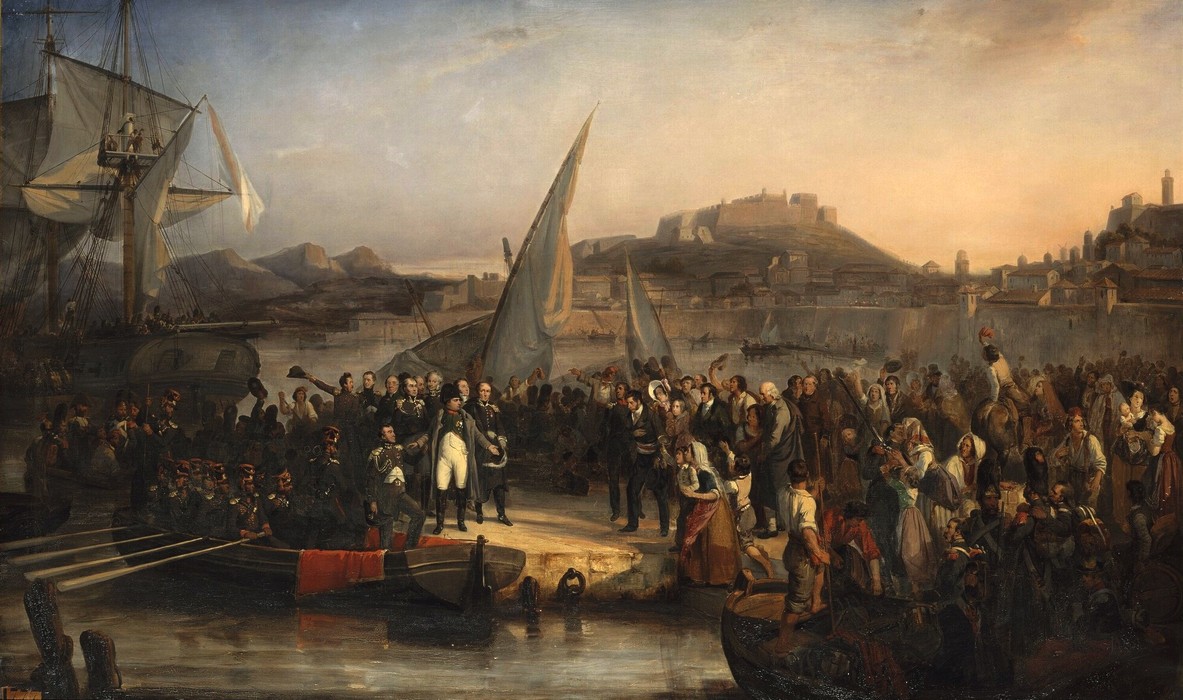
Napoleon secretively escapes from his exile in Elba and sets forth on his dramatic epic journey to France that will shake up a complacent and unwary European mainland.
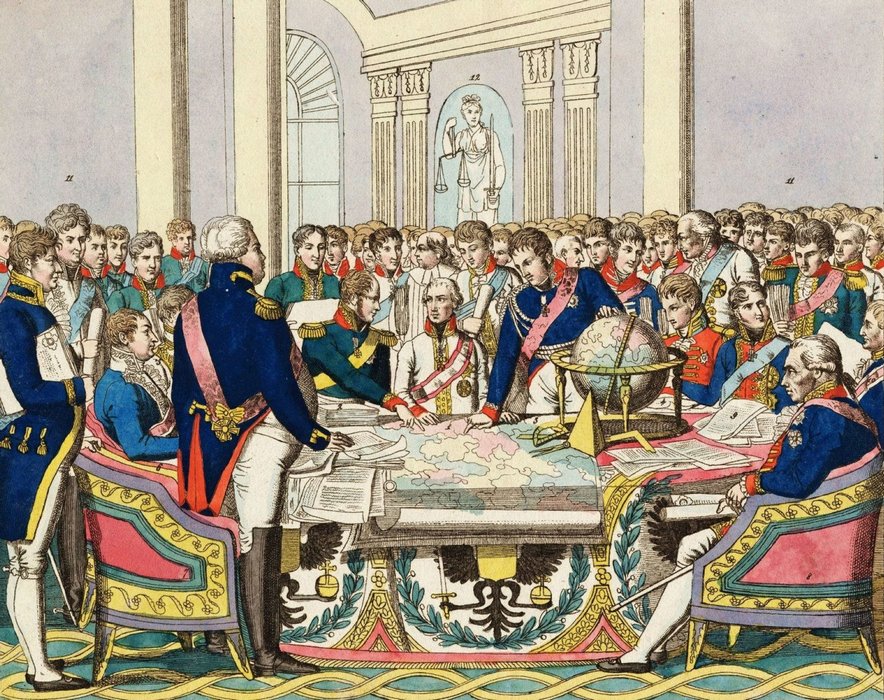
by unknown artist, early 19th-Century print
After finally defeating Napoleon and ousting him from power in the Spring of 1814, Europe's Allied Powers gathered in Austria later in the Fall and began negotiating a new European 'Order' at the Congress of Vienna
- amid festivities, haggling, secret dealings and even looming real concerns of new wars flaring up among them.
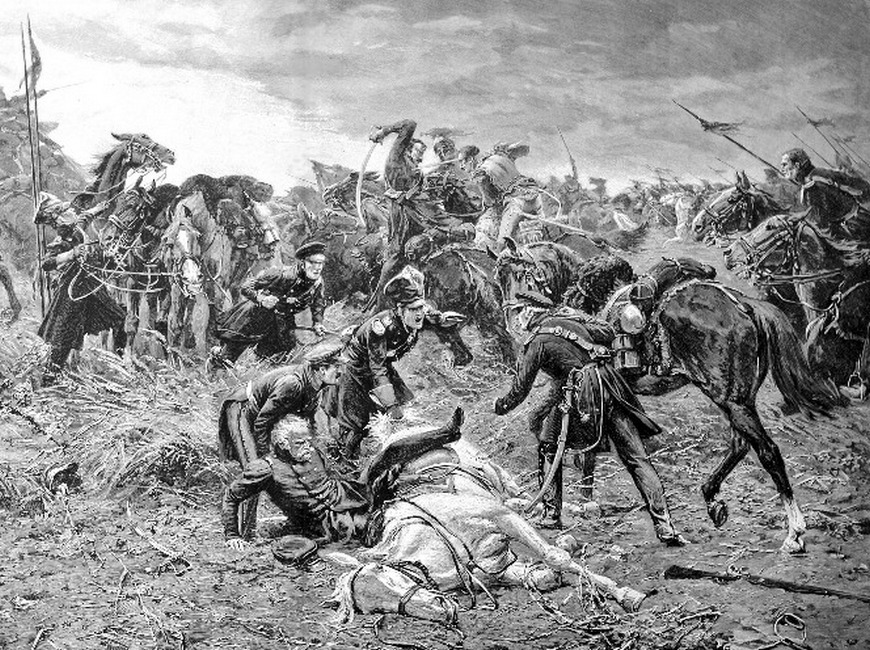
- An illustration print from the book 'Napoleon in Exile' by Norwood Young, 1915
Napoleon's escape from Elba and arrival in France hit the French reigning Bourbons and all of Europe like a whirlwind. Carefully choosing the most opportune but still hazardous route from his arrival point on the coast of France leading all the way to Paris, Napoleon won over the crucial enthusiastic support of the soldiers and officers, along with some of his former commanders. The ardent Bonapartists who were a long time waiting for their hero's return, revealed themselves with zeal. At the Congress of Vienna, the Allied leaders quickly resolved to crush Napoleon forever in yet another new war by combining their overwhelming war resources in the creation of their Seventh Coalition.
by unknown artist, 19th-Century print
Napoleon's preparations for war and his surprise invasion of Belgium in mid-June 1815, had caught the Seventh Coalition almost fatally off-guard. The French attack had caught Wellington and his Prussian allies slacking in an effective initial joint response. In each of the commander's first battles in the campaign, both had very narrowly escaped capture.
The allied leaders were compelled to retire from those battlegrounds and reorganize many miles to their rear so that they could effect a unified operation once more to face-off against Napoleon one more time - and together.
Napoleon's primary objective to split the allied armies in Belgium had failed.
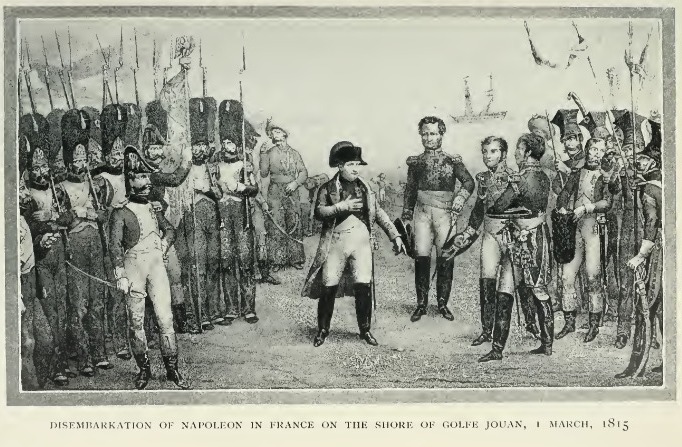
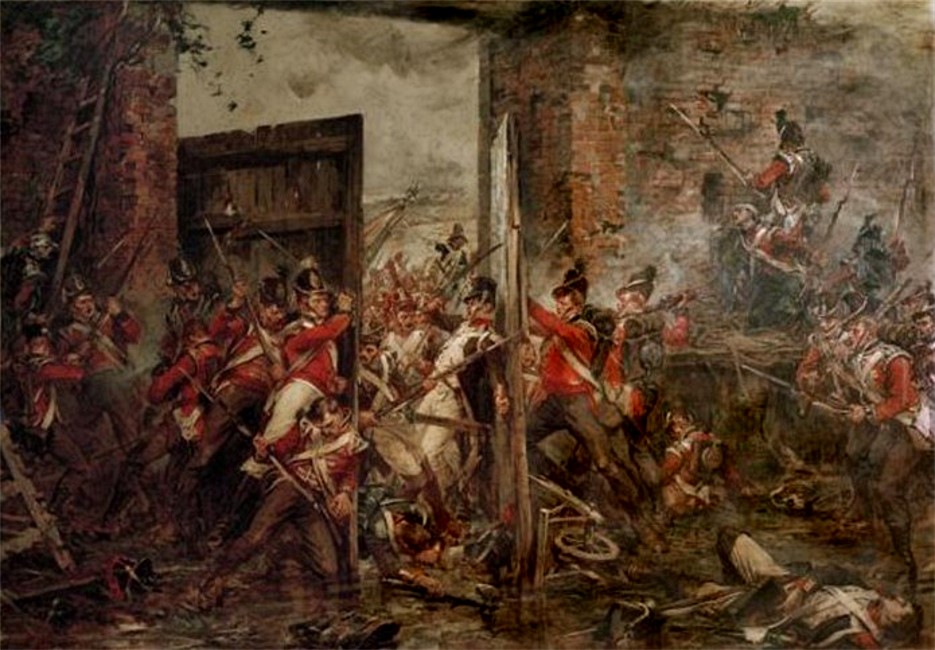
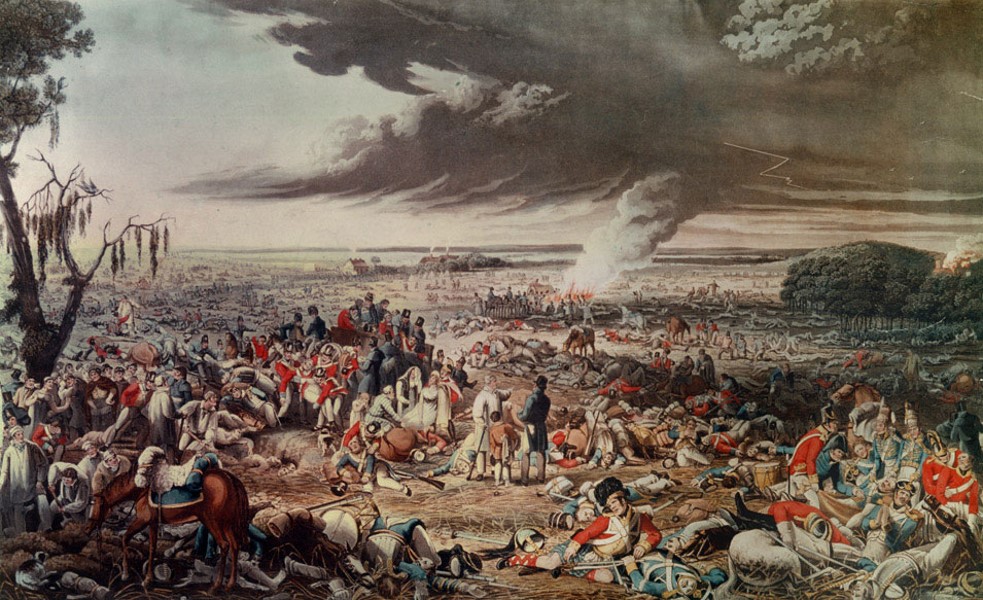

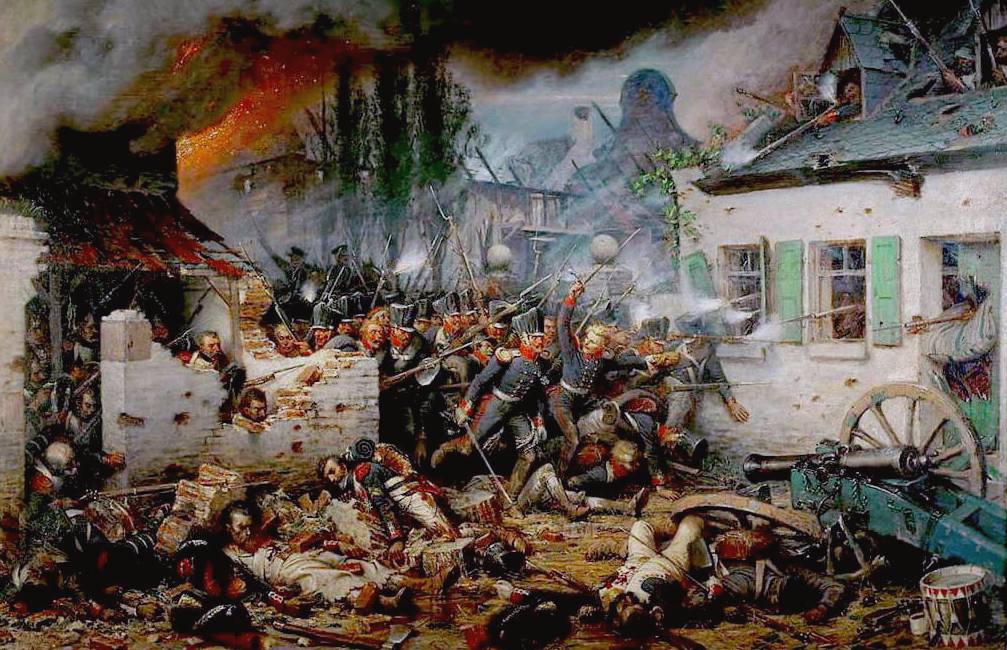
by Robert Gibb, 1903
One of the most fascinating aspects of the Waterloo campaign is its intriguing attraction with military historians, researchers, and historical enthusiasts for over 200 years. Debates, memorabilia, new related findings and re-examined controversies continue to swirl unabated, adding to innumerable retellings of one of the most sanguine and grimly documented military events in all history. Many key moments in the Waterloo Campaign are touted by the 'experts' as pivotal points that contributed to the victory over Napoleon. One such moment was the successful desperate prevention of the French capturing the key defensive strongpoint of the chateau of Hougoumont in Wellington's front line.
by Adolf North, 1864
The Battle of Waterloo has been attempted to be told in many convincing ways for over two centuries. Very early on there were wiser writers of that age and participants in the battle who had dryly remarked how the Waterloo history would be written inaccurately by many at first and over the years more common sense versions would start appearing. Political and petty nationalistic biases, alongside improperly researched accounts, had skewered many of the stories written about the Waterloo Campaign in the first 100 years. Even still, there were many thoroughly detailed sources compiled via discussions with living participants in that time; works that contemporary writers rely on for current studies of the epic episode.
The battle swayed back and forth between the rivals; for many of the petrified recruits and conscripts it was their first major battle and their last. While there are some followers of military history who are fixated on war as merely a game of glory - and as well sit in their comfy armchairs mocking the plight of young soldiers suffering battle stress and deserting during this particularly horrific cauldron of Napoleonic warfare, there are more and more who historians properly recount the battle with empathy for all the combatants who minute by minute expected to be grotesquely maimed or killed like their comrades standing next to them. The final hours of the Battle of Waterloo were atrociously bloody and deadly as survivors willed themselves on the crescendo of death of all around; himself cheating death all day as he dashed between each of the frontline hotspots, it was the Duke of Wellington who cried deeply over the first reports of the immense casualty losses of friends on his staff after the battle ended.
by Louis Dumoulin, 1915
In modern day English-versions of the Waterloo campaign the roles of soldiers from the Prussian army and non-English Allied contingents receive robust exposure of their crucial roles with more fair acclaim and well researched documentation which was very rarely the case for the first 150 years. Writers such as Siborne bearing the brunt of arrogant British elitist condemnation for daring to attempt to expose simple factual equal representation of the campaign through his famous Waterloo miniatures battlefield which he felt compelled to drastically cut the numbers of Prussian soldiers he originally placed in the diorama.
The unit histories, soldiers accounts, staff commanders memoirs and reports of the Prussians, Dutch, Belgians, Nassau, Brunswickers, Hanoverians, and KGL combatants are given more deserved recognition in full additions of their own worded stories of their participation in the campaign - thus raising the event's history to a new level of accuracy and respectability.
The Prussian army's military feat of arms from June 17th-18th, 1815 was nothing short of a Herculean effort.
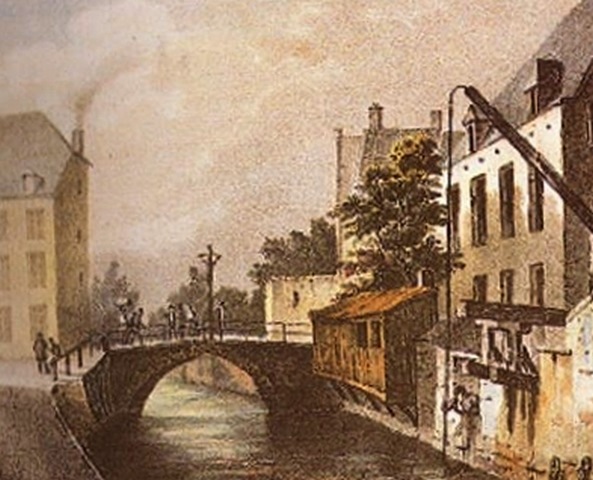
Early 19th-Century painting by unknown artist
The Battle of Wavre fought on June 18th-19th is typically given scant description in Waterloo documentation.
It was a bitterly fought action with crucial missions assigned to the rival Prussian and French commanders.
The River Dyle and its major bridge crossings at Wavre played important roles in the campaign's endgame.
by John Heavside Clark, 1817
The battlefield of Waterloo on the following morning. A typical hideous war scene that leaders of nations casually disregard in their common pursuit of creating wars and sending others to fight and die in them - and afterwards not caring for those surviving.
waterloo-napoleon.com ©
Our choices of Napoleonic Vintage Art selections
Our membership area fully explores period art and artists of the Napoleonic Era.
























